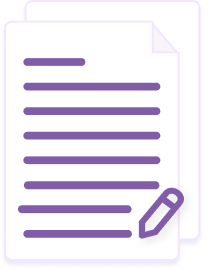Your data doesn't train Genie's AI
You keep IP ownership of your information
What is a Memorandum of Understanding?
A Memorandum of Understanding outlines how two or more parties plan to work together, creating a roadmap for their relationship without the full legal weight of a contract. It's commonly used when organizations want to partner on projects, share resources, or explore opportunities before making binding commitments.
While not typically legally enforceable in U.S. courts, these documents help prevent misunderstandings by capturing key points like roles, responsibilities, and shared goals. Government agencies, nonprofits, and businesses often use MOUs to document their intentions and build trust before moving forward with formal agreements.
When should you use a Memorandum of Understanding?
Use a Memorandum of Understanding when you need to outline a partnership or collaboration before diving into detailed legal agreements. It's perfect for early-stage discussions where you want to document shared goals and basic terms without creating binding obligations - like exploring a joint research project, planning resource sharing between agencies, or structuring a potential business alliance.
This document proves especially valuable when working across organizational boundaries, particularly with government entities or international partners. It helps build trust, align expectations, and create a framework for future negotiations while giving both sides flexibility to adjust course as the relationship develops.
What are the different types of Memorandum of Understanding?
- Deed Of Understanding: A more formal variation used when parties want their agreement to carry greater legal weight
- MOU For Business Partnership: Outlines basic terms for potential business collaborations and resource sharing
- Memorandum Of Agreement: A slightly more binding version that includes specific commitments and deliverables
- MOU For Joint Venture: Focuses on combining resources and sharing risks for specific projects
- MOU Strategic Partnership Agreement: Used for long-term alliances with broader scope and strategic goals
Who should typically use a Memorandum of Understanding?
- Government Agencies: Federal, state, and local departments use MOUs to coordinate programs, share resources, and establish interagency partnerships without formal contracts
- Educational Institutions: Universities and research centers create MOUs for academic partnerships, joint research initiatives, and student exchange programs
- Corporate Legal Teams: Draft and review MOUs for potential business partnerships, ensuring alignment with company objectives while maintaining flexibility
- Nonprofit Organizations: Establish collaborative frameworks with donors, partners, and other NGOs to outline shared missions and resource commitments
- International Organizations: Use MOUs to document cross-border initiatives and partnerships where formal treaties aren't necessary
How do you write a Memorandum of Understanding?
- Gather Party Details: Collect legal names, addresses, and authorized representatives of all participating organizations
- Define Purpose: Write a clear statement of shared goals, intended outcomes, and scope of collaboration
- Outline Responsibilities: List specific roles, resources, and commitments from each party
- Set Timeline: Establish start dates, milestones, and duration of the agreement
- Include Key Terms: Address confidentiality, intellectual property rights, and termination conditions
- Use Our Platform: Generate a customized, legally-sound MOU that includes all required elements and reduces drafting errors
- Review Details: Double-check all information and have key stakeholders review before finalizing
What should be included in a Memorandum of Understanding?
- Identification Section: Full legal names and addresses of all participating parties
- Purpose Statement: Clear description of goals, scope, and intended outcomes
- Roles and Responsibilities: Specific duties and commitments of each party
- Duration Clause: Start date, term length, and renewal conditions
- Resource Allocation: Details on sharing of costs, personnel, or materials
- Confidentiality Terms: Protection of sensitive information shared during collaboration
- Termination Provisions: Conditions and process for ending the agreement
- Signature Block: Space for authorized representatives to sign and date
- Non-Binding Statement: Clear indication that the MOU is not legally binding
What's the difference between a Memorandum of Understanding and a Memorandum of Association?
A Memorandum of Association differs significantly from a Memorandum of Understanding in both purpose and legal weight. While an MOU outlines informal arrangements between parties, a Memorandum of Association is a foundational corporate document that legally establishes a company's existence and defines its relationship with outside stakeholders.
- Legal Enforceability: MOUs are generally non-binding guidelines, while Memorandums of Association are legally binding corporate charters
- Purpose: MOUs facilitate cooperation between existing entities; Memorandums of Association create new legal entities
- Content Focus: MOUs detail collaborative arrangements and shared goals; Memorandums of Association specify company objectives, structure, and powers
- Parties Involved: MOUs typically involve two or more independent organizations; Memorandums of Association involve founders, shareholders, and regulatory bodies
- Modification Process: MOUs can be easily amended by mutual agreement; Memorandums of Association require formal legal procedures to modify

Genie’s Security Promise
Genie is the safest place to draft. Here’s how we prioritise your privacy and security.
Your documents are private:
We do not train on your data; Genie’s AI improves independently
All data stored on Genie is private to your organisation
Your documents are protected:
Your documents are protected by ultra-secure 256-bit encryption
We are ISO27001 certified, so your data is secure
Organizational security:
You retain IP ownership of your documents and their information
You have full control over your data and who gets to see it

